Metro’s TAP problems – Bus Driver Training
Metro has received a lot of attention lately because of the implementation of their TAP – Transit Access Pass fare collection system. CityWatch published a pretty accurate list of TAP issues that frustrate transit users on a daily basis. Metro’s in-house news team The Source published a rebuttal with a memo from David Sutton, Deputy Executive Officer, TAP.
Metro did provide some explanation and solutions to some of the issues, but certainly did not give anyone the impression TAP is going to get any better soon. Those major issues aside, I think Metro has a bigger problem on hand that they don’t talk about. Bus driver implementation of the TAP program.
I recently wrote about my experience trying to purchase a Day pass from a bus operator using the stored value on my TAP card, after all one of the reasons to go to a smart card system is to store money on it for ease of purchasing 1 trip fares or day/monthly passes. 2 drivers didn’t know how to add a day pass using the stored value on the TAP card or they said it couldn’t be done. I understand 2 is a small sample size to judge a system with over 4,400 bus/rail operators but as a customer it only takes 1 bad experience to get frustrated with the failing system.
Most of the time my journey starts at a metro rail station where there are plenty of vending machines to quickly add a day pass to my TAP card using the stored value. However when I do start a journey using the bus I expect the same level of service to add my day pass to the TAP card. Yesterday I tried to do this one more time. I boarded the 158 bus toward Chatsworth station and asked the driver if I could purchase a day pass using the stored value on my card. He gave me a questioned look and said it was $5.00. I said yes a day pass is $5.00 and I want to deduct it from my card. He said if I had stored value just tap the card and the reader will deduct the fare. I insisted I wanted a day pass and it required him to do something before I Tapped my card. Again he was confused, so I surrendered yet again to the ignorance of the bus driver and tapped my card to pay a one way fare.
This was not only frustrating by embarrassing as I was showing a new bus rider how to use the system. Certainly your first experience on the bus should not be met with confusion by the operator. I sent a complaint to Metro customer service for a second time on this issue. I am afraid each time I try to purchase a day pass from a bus operator I will be wasting my time and money complaining.
I did tweet a message to @metrolosangeles stating my issue (I errantly put the wrong bus number 165 instead of 158, but does it really matter) and they replied back with a message that they are working on a TAP sales training program for bus drivers for which I asked if TAP has been in use for over 3 years why are they now just implementing a training program? Metro has spent a lot of money on the TAP system and still have not met the customer needs when it comes to executing it on a daily basis. Lets hope Metro follows through and I won’t have to battle bus drivers and tell them how to do their job.
UPDATE 8/16/2013:
I just received a call from the metro customer service center. They wanted to let me know that my complaint was being addressed and apologized for the inconvenience. The agent also noted if you have a driver that does not know how to do it, to tell them to hit the day pass button and then you can tap your card and the $5.00 will be deducted and the day pass will be loaded.
Metro to the End of the World
Taking the subway, light rail or bus to far off places is something a broad reaching system lets you do. Metro and it’s municipal transit partners makes it easy for you to get throughout Los Angeles county with relative ease. Certainly getting from Downtown LA to the farthest reaches of the west coast on a 2 seat ride is a pretty good deal. Of course some areas of Los Angeles may need 2 or 3 transfers and there are certainly undeserved areas of transit, but that is a post for another day, today we are going to have fun.
I like making challenges for myself by planning to use transit when I can easily drive. So when I looked at the Metro System map I was impressed they had a limited stop bus (344) to Palos Verdes. With the addition of the super fast Silver Line (910) service I would be able to get from Downtown LA to the cliffs at the edge of the world in a little longer than it would take to drive.
Getting to the end of the world is actually easier than planning an outing to the San Fernando Valley as the 344 has a decent frequency with buses running until about 8 pm. The silver line has frequent enough service to make this trip a walk in the park. So with my TAP card in hand with stored value cash purse I was ready for a day on the coast. Checking the Next Bus service or other transit apps is always useful for knowing when the bus will arrive.
With the Silver line bus pulling up to the stop at 3rd and Grand I was ready for adventure, but unfortunately the adventure didn’t start out as planned. I asked the driver for a day pass using my card, he acknowledged me with a nod and I TAPped my card on the reader. He looked at me with the that deer in the headlight stare as the TAP fare box beeped. “oh I thought you were going to pay with cash, the machine just took a regular Silver line fare and not a Daypass” said the driver. I said well I am riding all day so I still need a daypass. He mashed some buttons on the reader and said OK. But of course nothing happened. The card was read in the system already so he said come back in 7 min or so. Well I figured he may screw up again so I decided to just get a daypass on my transfer to the 344. Strike one for Metro, but I am heading to the coast so I guess it’s not that bad.
The Silver line is really a great service if you are heading to south LA or the south bay area. It whisks you passed all the traffic on the 110 with limited stops using the Harbor Freeway Express lanes. The bus was filled with people wearing their Sunday best including a gentleman with his bike. The bike rack was full, but the driver let him take his bike on in the back because he was going only one stop and the bus was not that full. Kudos to the driver for bending the rules in a common sense scenario that helped someone to get to church on time.
The quick ride to harbor gateway transit center was nice and efficient. The wait time for the 344 was about 10 min, not too bad. Boarding the bus I asked the driver for a daypass using the stored value on my card. She looked at me and said that is not possible. She said you can only use the card with stored value for a regular fair and not a day pass. I was confused because I know I have loaded a daypass on this card before using the automated ticket machine at the Redline subway stop. I asked again and she just told me to tap my card. Still confused I complied with her request and took my seat figuring she was mistaken but not worth the hassle to argue. Strike Two!
The 344 has a limited stop route which is nice because it does have to cover some distance from the Harbor Gateway transit center to Rancho Palos Verdes. The ride was quick as there were very few people getting on and off the bus. Winding our way through the hills we twist and turn offering peeks of beautiful views of the ocean. The stop at Hawthorn and Palos Verdes West Dr was my stop to get off with my final destination of Point Vicente Light house just a few hundred yards away. As I exited the bus I mentioned to the driver that I have had both a daypass and stored value on my TAP card before. She said well maybe it’s different at the subway, so I just shook it off and said “Have a nice day”. The intersection houses a shopping center with a Starbucks, restaurants and most importantly a Trader Joe’s. Having access to gather provisions for a picnic makes it nice not having to lug all that on the trip there. With the makings of a nice lunch I walked to the lighthouse park. When I got the the street I saw the bus driver waiting at the layover area and she waived my over. She asked if I was traveling more today and I said yes. She grabbed a paper transfer and marked it for daypass use. She said that I should show the paper with my TAP card and tell the driver there was a problem loading a daypass. I thought that was a nice gesture and thanked her but ultimately I found out later from Metro Customer Service that she can and should have loaded a daypass on my card with the stored value.
Point Vicente with the lighthouse, park and interpretive center is a great place to spend time exploring, hiking and relaxing. It was a great day hiking the trails with beautiful views in all directions. The lighthouse is closed to the public as it is a Coast Guard Facility but they do open it once a month for visitor to go to the top and view the inside. The interpretive center is staffed by knowledgeable volunteers about the history, flora and fauna of the area and often have programs and guided hikes. It is a really great place and I had a wonderful picnic.
I hit the 7-11 adjacent to the bus stop and then waited for my ride back to the transit center. The 344 ride back was uneventful and I was soon back at the Harbor Gateway transit center. About a 20 min wait for the Silver line and then off to Downtown. Again a nice quick ride and I was back in the city.
Overall the trip was fun and didn’t take too long. The silver line ride is about 25 – 30 min and the 344 is a little longer at about 45 min. Not bad to get to the end of the wold.
Death by Metro
Yesterday someone lost their life by being hit by a subway train on the Metro Purple/Red line at the Pershing Square Station. Looking at the local news including Metro’s own The Source, one would think there was much ado about nothing. Even Streetsblog decided to run a story on the failure of TAP locking program with no mention of last nights incident.
The source posted a cryptic message about a medical emergency and informed it’s readers of the closing in this post, but it begs the question why hide the fact someone died. Early on with little information, I am sure Metro wanted to be cautious of releasing information, but we have seen in the past where metro has very little to offer when it comes to incident involving their buses or trains. Everything to Metro and The Source seems to be a “medical emergency”.
I have no additional information at this time, a quick internet search pulled very little about this incident that one would thing would draw major news headlines. As of this posting we have KPCC and a local newspaper from Indiana covering this story.
Los Angeles Union Station Master Plan Community Meeting
With Metro’s purchase of Union Station the question became how can the transit agency improve and enhance the station’s functionality without ruining the historic station and it’s grand architecture. I really didn’t have a vision of what Union Station could be, I have always seen the iconic station as a fixed structure that only minor improvements could be made. Prior to yesterday’s meeting which can been seen archived here, I have not payed much attention to the planning process.
Metro’s project site does a good job of laying out the project goals and timeline of the current process. In last night’s meeting metro staff and project consultants highlighted the past milestones of the project and the path forward to finalizing the master plan. The project presentation worked through some of the alternative options that would improve transit connections, neighborhood connections, public space and programming and streetscape.
My first impression was positive as metro did a good job of outlining these goals and presenting solutions with a vision of a transit hub and community anchor that would be a place of efficient travel connections and destination in of itself.
The main issue right now is transit connections and their inefficiency. Metro does a good job in highlighting the problem in this slide:
As you can see the purple groups are bus connections with all happen at the perimeter of the property where bus stops and streets are dark and uninviting and are far away from other transit connections like rail and subway. Metro highlighted that Vignes and Ceasar Chavez get as many boardings as Patsaouras transit plaza yet the experience waiting for the bus is far from ideal on that corner. To improve this they have proposed a central bus terminal that is central to transit connections and is a more inviting space to wait for the bus. Executing this part of the plan would go a long way in making Union Station a far better transit hub than it is now.
Connections in front, in back and to surrounding neighborhoods is also a priority. The current access outside the station is far from ideal and metro has addressed this with improved streetscape to Olvera street and improving the space in front by removing parking and making better use of open space. Again a move that would connect the station better for pedestrians is good for everyone. In addition, they talked about programming these public spaces to make Union Station more of a community hub. I liken this to what Grand Park is doing by adding value with events and programs that appeal to the area. Using Union station for other than just a place to get a train or bus is a great idea.
The major component to the plan is the improved passenger concourse which is the heart of the connections to transit, retail and public space. Right now the concourse is narrow and dark running under the existing tracks. Metro has 2 visions of improvement. One is a North/South concourse located between the historic station and the current alignment of tracks with a bus terminal to the north along Ceasar Chavez. The other is a East alignment that would wither go over/under that tracks with the bus terminal in a more central location. Both approaches seem to make vast improvements, however from a connection standpoint the east/west concourse makes the most sense. In either option the idea is an open concept with natural light and good flow for pedestrians and transit connections.
Overall I think metro has done a good job in taking broad brush strokes for the master plan. Certainly they have done the work by studying usage and travel patterns and have envision plans that will certainly improve Union Station without harming the historic character. Of course with Metro there is always the caveat. No mention of funding or cost was presented with these initial offerings. Certainly this early it is hard to knock out a budget, but the master plan will require the proper execution if they want to make this a world class transit hub and destination. It is a long process so we will have to see if Metro and its partners can deliver.
I would encourage everyone to take a look at the presentation and website.
A Bridge not too far – 10 LA Bridges with Big Parade LA
When one wants to explore the city of Los Angeles and learn about it’s culture, history and interesting past – you need to look no further than the cities chief pedestrian, Dan Koeppel. Dan has been leading groups of people on walks up stairs, down hills, through tunnels and overpasses for years and I have had the opportunity to join his organize walks in the city I love.
Most articles that talk about Dan and his walks always start with the Cliche “Nobody walks in LA”, well we will spare you the silly reference to a missing persons song and just say that Dan has shown us that walking in LA is a look into the past and future of LA and requires very little but a sense of adventure and your two feet. The Big Parade LA is the perennial event that Dan puts on each year that explores the stairs of Los Angeles that are a bygone connection of LA’s past to public transportation. Last week he lead a group of walkers around Los Angeles on his 10 LA bridges walk. KCET published a good primer on the 10 LA Bridges walk including the organization, way points, rules and structure in addition to an homage to Will Campbell who’s 10 bridges bike ride was in part an inspiration for this walk.
Having lived near Downtown Los Angeles I was very familiar with the bridges that connect the eastside to the city center. Most of the time I ride my bike across these spans to get to NELA and environs and have had the opportunity to join one of Will Campbell’s aforementioned bike rides. Biking these bridges is certainly a harrowing experience, only one bridge has any biking related facilities and so you must share a lane on a narrow bridge with cars getting up to highway speeds. Walking was the perfect mode to experience the bridges and take time to admire structures, features and the history.
It’s Chinatown Jake
The weather gods were smiling upon us on Saturday morning as the overcast sky provided much needed shade from the hot sun. The meeting point was Chinatown Goldline Metro station. Many of Dan’s walks include public transportation options from the start and ending points giving options to leave the car at home. The commitment to public transit is important to highlight that Los Angeles is a city that is explorable even thought it covers a lot of square miles. Dan has proven with his model that walking and riding transportation is fun and not that scary once you get the hang of the system.
As the group gathered I saw some familiar faces that I have seen on Dan’s previous walks and we all got our big hats, bottles of water and sunscreen organized for a fun day. About 35 walkers joined from the start, but Dan organizes these walks so well that he has options to join in at any time. Working north to south we did a zig zag pattern over the Los Angeles river.
The walk along Broadway through Chinatown offered city views from NELA, East LA and DTLA. Once we got to our first bridge a surprise visit from city councilman Tom LeBonge as he pulled over to greet the group. I am not sure what he said as I was a little behind taking pictures of the Goldline and DTLA which from the Broadway bridge is a premium view. Once LeBonge finished his photo op, Dan started to discuss the history of the bridges in Los Angeles city and pointed out some details and facts of the Broadway bridge. I wasn’t taking notes as I wanted just to enjoy the day so I will provide some links for the facts: KCET again has some good resources on the history of the bridges.
The walk covered 10 of the 27 bridges and as we made our way over Boadway to Sping St and then over Main street my reflection turned to the city we don’t see. The city seen from a slower pace opens up. When in our cars or even on a bike the city seems to be a Monet painting up close, but as you step back and slow down, we see the city unfold in front of us. A piece of street art, a old sign, details of the old buildings stand out as you can focus and enjoy.
ZIG ZAG
As the crow flies there are not a lot of miles between Broadway, the northern point of the walk and Olympic, the southern, but with the river, railroad, warehouses and freeways in the way it is hard to make a straight line path so we must zig and zag. One of my favorite bridges oddly enough is one of the most nondescript and overlooked. The Main st bridge is on the shorter side and really is not as sexy as some of the other bridges, but I like this bridge because it is the only one that is at grade with the railroad tracks. So crossing the bridge you get views of the rail lines from north to south which to me is a interesting aspect of that bridge.
PED Crossing
Broadway, Spring, Main to 1st we moved along at a good pace stopping to admire the neighboring bridges and learn a little about the one we were on. Walking on bridges is certainly not an ideal pedestrian experience. High curbs, narrow sidewalks, trash, broken glass and other road and human remnants make walking on these bridges less than ideal. In addition cars get up to speed so you have racing cars to add to the mix. Between the bridges were stretches of roads where we would cross over or under the freeway system, which to me is an even poorer pedestrian experience. Cars speeding on a freeway makes a lot of noise and I notice it hard to hold conversations with my walk mates as we made our way. So certainly these areas are not ideal for pedestrians, but the walk was certainly worth the noise.
As the walk moved on to the numbered street bridges, we entered Boyle Heights and were treated to Prospect park, Mariachi Plaza and Hollenbeck park as well as old interesting houses in various states of repair. I’ve biked through these areas many times, but walking lets you see the people and houses and streets – it lets you be human.
A Bridge too far
After lunch we continued on 4th and then 6th streets both paramount in Los Angeles as the 4th st bridge is the link that Ciclavia has been using to connect the east side to DTLA and the 6th street bridge for it’s iconic status and views. 6th street was the end of the line for me. I wanted to complete the cycle, but my feet were not accommodating. With the 18 Metro bus stop in view I got my TAP card ready for a short ride to DTLA to catch the Redline. The other Brave walkers continued on to 7th street and Olympic before heading over 4th street at Lorena and ending the walk at the Indiana Goldline station.
Overall this was a great experience. Dan does a really good job of organizing and executing his walks. The people are friendly and the history is interesting. Here is the route the walk took, in all about 14 miles and change.
To learn more about the walks or the Big Parade LA you can check out the Facebook page or follow them on twitter.
Fante’s Hill
Photo Post for your transit nostalgia
http://transitwatchla.tumblr.com/post/52171882319/lost-angeles-fantes-city-bunker-hill
50 Years ago Los Angeles Transit would look Mickey Mouse
I am a big fan of Monorail systems and have enjoyed riding a few throughout the years. Disneyland is the iconic monorail system that every kid in southern california grew up with and if like me fell in love with. Monorails seem futuristic in a George Jetson sort of way. Seattle has a functioning albeit short monorail that runs at a profit, and if it were up to some enterprising forward thinkers back in 1961 Los Angeles would have a link via monorail between Downtown LA and LAX. Think the green line but actually goes to the airport.
Some don’t like the idea of monorails and there are certainly reasons why not to, but we can all imagine a Los Angeles that replaces it tracks for elevated rails and became the city of the future. But alas it was not meant to be and now we struggle to implant transit into this great city at a huge expense.
See the story at the all so great Primary Resources transportation Library:
Transit Watch LA
Welcome to a new site dedicated to issues gravitating around transit in Los Angeles.
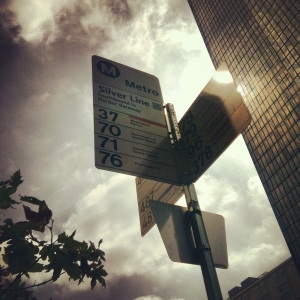
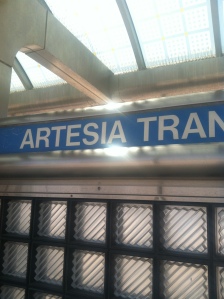
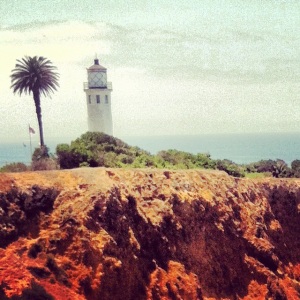
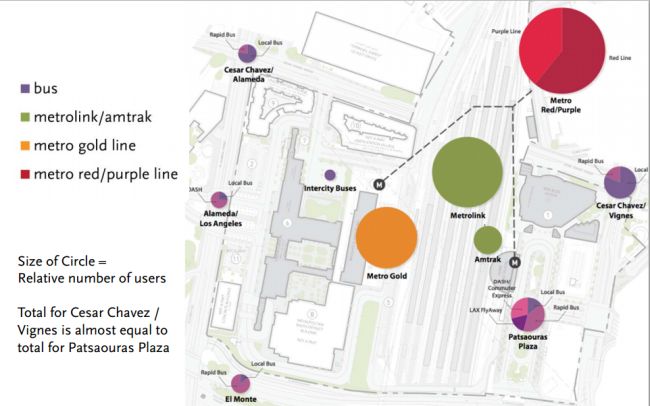
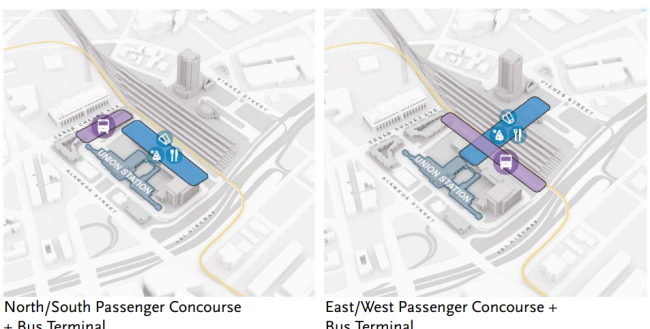
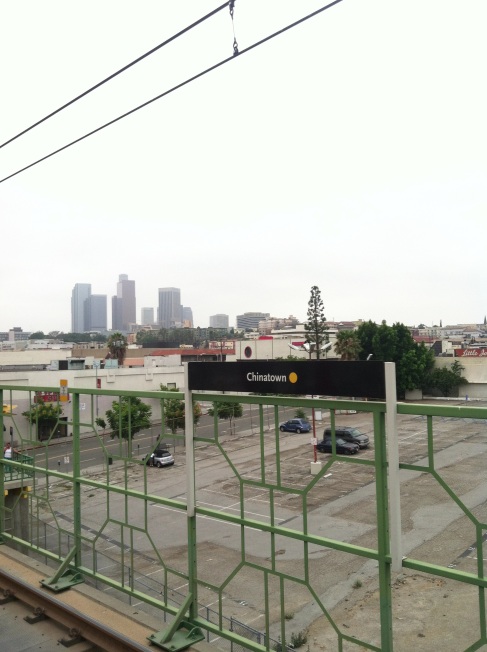
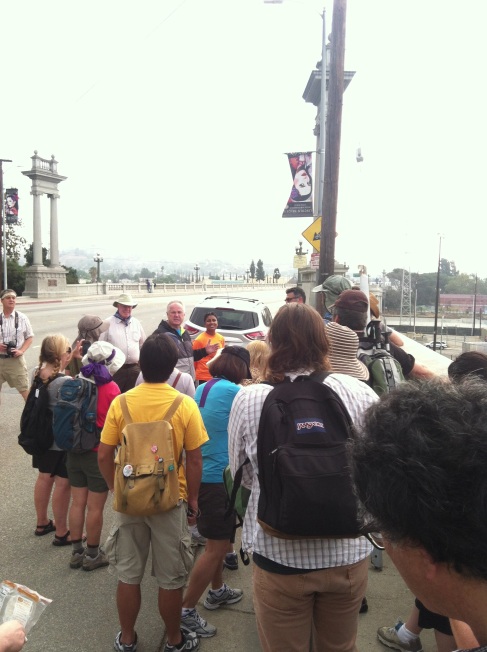
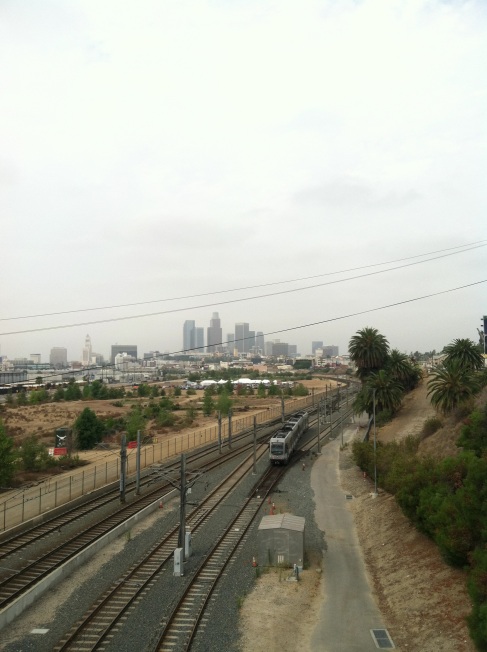
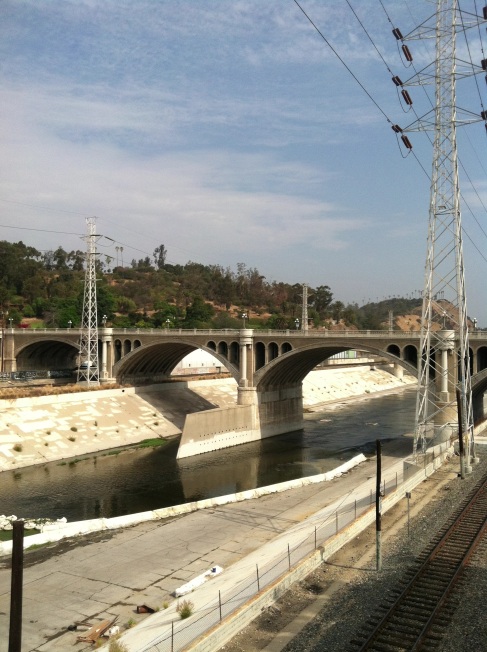
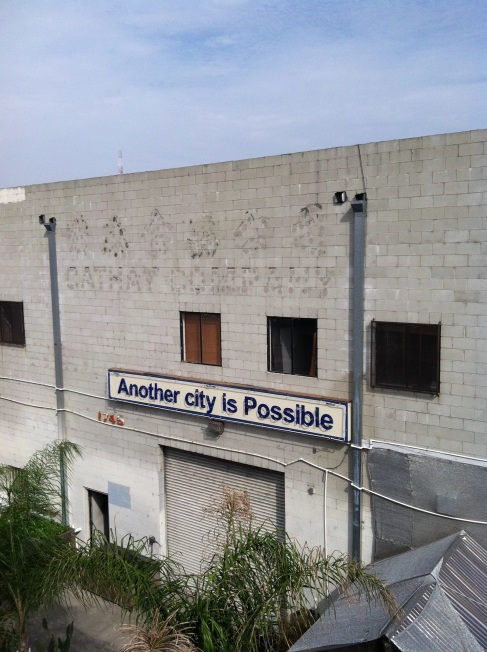
Recent Comments